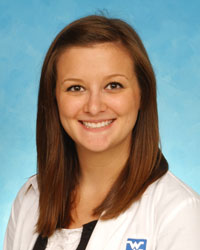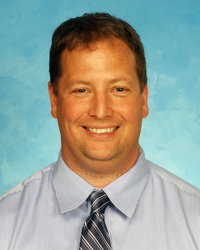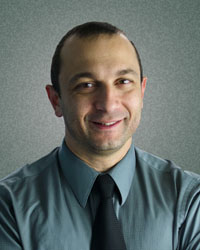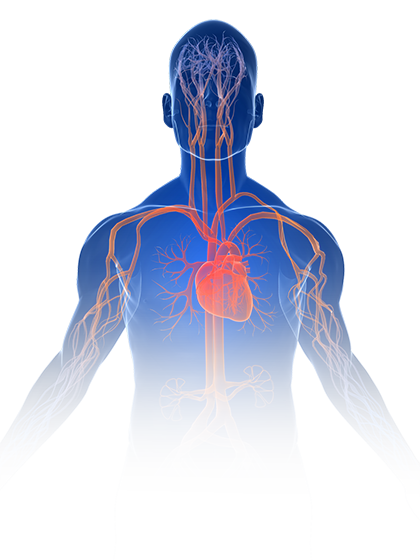About
CME Purpose
To educate our local medical community about current cardiac and vascular diseases, treatments, and updates
Content Areas
A variety of topics currently pertinent in the cardiology and vascular surgery practice settings including but not limited to: pharmacology of the cardiac patient, collaborative practice, bridging the gap between PCPs and specialists, preventive medicine, critical care nursing, WV’s current health status based on statistical ranking, arterial and venous vascular diseases, transcutaneous aortic valve replacement, bi ventricular intracardiac defibrillators and resynchronization therapy, the forefront of congestive heart failure, pulmonary hypertension, vascular disease in the pediatric patient, cardiovascular stress testing protocols, high risk cardiac surgery, non cardiac chest pain, broken heart syndrome, high risk percutaneous coronary intervention and hemdynamic support
Target Audience
cardiologists, cardiac and vascular surgeons, primary care physicians, non physician providers (NP’s and PA’s), nurse clinicians, floor nurses, echocardiographic technologists, vascular technologists, radiologic technologists, cardiac catheterization laboratory technologists, licensed practical nurses, medical assistants.
Types of Activities
Didactic lecture based learning, case presentations, question and answer sessions, heart failure forum.
Expected Results
Increase knowledge of the target audience in regards to updates in both cardiac and vascular medicine. Increase referral base to both vascular surgery and the Heart Institute outpatient services as appropriate.
Agenda & Sessions
Wissam Gharib M.D. ,FACC, FSCAI
When to call your Cardiologist
- Discuss when it is appropriate to consult/refer to a cardiologist
- Review common scenarios in primary care that lead to referrals
Rachel Vaglienti, PA-C, MS PAS
Drugs - when to start and when to Stop
- Identify medical therapy for the cardiovascular patient in the peri-operative period (when to stop oral anticoagulants and antiplatelets)
- Discuss the duration of various therapies for the cardiac patient
Denise Palmer, RN, BCMA, CCRC
Collaborative Practice: Making a good practice great
- Define the role of collaborative practice in the outpatient clinic between practitioners, nurses and support staff
- Describe two communication tools that increase effective office practices
- Identify community resources that would result in greater public image
Jude Guess, MSN, N.P.-C.
The Basics of Great Medical Care
- Recognize the role of preventative medical therapy in the outpatient setting
- Discuss preventive medicine and its benefits
Donnie Goodwin, ACNP
The care of the post-CABG patient in the CTU
- Describe the ICU setting and why great nursing care makes all the difference in patient outcomes
- Identify standard of care for critically ill patients
Refreshments
Dinner
Breakfast
Welcome Address
Bradford E. Warden, M.D., FACC, FSCAI
Number #1 is not a good place to be
- Describe the state of health in West Virginia
- Discuss how to improve the health of the people in West Virginia
- Identify risk factors for poor health status and how to modify behaviors
Lakshmikuma Pillai, M.D., FACS
Screening for Vascular Pathologies
- Discover how to screen patient with arterial vascular disease
- Discuss when intervention is or is not indicated
Robert Hull, M.D., FACC
Failure and Death
- Expand the understanding of heart failure and hospice care and how they are related
- Recognize standard of care practices related to medical therapy and heart failure
Stanley Schmidt, M.D., FACC
Who Really Needs a BIV-ICD?
- Recognize the availability of bi-ventricular ICD
- Identify which patients benefit from implantation
- Discuss resynchronization therapy
Break
Pamela Zimmerman, M.D., FACS
Venous Diseases
- Describe venous disease and the treatment options available
- Identify signs and symptoms of vascular disease
Anthony Holden, M.D., FACS -- Wissam Gharib, M.D., FACC, FSCAI
Percutaneous Aortic Valve Replacement
- Describe new and upcoming treatments for patients with aortic stenosis
- Identify the appropriate patient population for percutaneous aortic valve replacement
- Discuss the role of the hybrid operating room and its importance
Jason Moreland, M.D., FACC, FSCAI
Diagnosis: Pulmonary Hypertension - Now what?
- How to identify pulmonary hypertension
- Define treatment options for the pulmonary hypertensive patient
Alexander D'Audiffret, M.D., FACS
Pediatric Vascular Disease
- Recognize the prevalence of vascular disease in the pediatric patient
- Discuss treatment options for the pediatric vascular patient
Lunch
Wissam Gharib M.D. ,FACC, FSCAI
The Future of Heart Failure
- Discuss the importance of heart failure and novel treatment for keeping the patient optimized on their medical therapy
- Describe the interventional therapy options for the heart failure patient
Anthony Morise, M.D., FACC
Should I Stress?
- Identify the appropriate patient selection for cardiac stress testing
- How to formulate patient protocols in cardiac stress testing
Kevin Tveter, M.D., FACS
Congenital Heart Diesase in the Adult Patient
- Identify the surgical options in the adult patient with congenital heart disease
- Review case studies of two patients with adult congenital heart disease requiring surgical repair and their subsequent management
Break
Ehab Akkary, M.D., FACS, FASMBS
Non-Cardiac Chest Pain
- Describe the pathology for non-cardiac chest pain
- Formulate a differential diagnosis for chest pain
- Discuss medical and surgical treatment of non cardiac chest pain
Anthony Roda- Renzelli, M.D., FACC
Takotsubo – The Broken Heart Syndrome
- Identify the patient with takotsubo syndrome
- Discuss the pathophysiology of takotsubo syndrome
- Recognize the role stress plays in heart failure
Wissam Gharib M.D., FACC, FSCAI
Some option is better than no option
- Identify the options for patients with complex coronary artery disease
- Discuss the role of hemodynamic support in complex and high risk percutaneous coronary intervention
Keynote Speakers
-
Wissam Gharib, M.D., FACC, FSCAI
Cardiology
-
 Rachel Vaglienti, PA-C, MS PAS
Rachel Vaglienti, PA-C, MS PASCardiology
-
Denise Palmer, RN, BCMA, CCRC
Cardiology
-
Jude Guess, MSN, N.P.-C.
Cardiology
-
 Donnie Goodwin, ACNP
Donnie Goodwin, ACNPCardiothoracic Surgery
-
Bradford E. Warden, M.D., FACC, FSCAI
Cardiology
-
Lakshmikumar Pillai, M.D., FACS
Vascular Surgery
-
Anthony Holden, M.D., FACS
Cardiothoracic Surgery
-
Stanley Schmidt, M.D., FACC
Cardiac Electrophysiology
-
Pamela Zimmerman, M.D., FACS
Vascular Surgery
-
Robert Hull, M.D., FACC
Cardiac Electrophysiology
-
Jason Moreland, M.D., FACC, FSCAI
Cardiology
-
Alexander D'Audiffret, M.D., FACS
Vascular Surgery
-
Anthony Morise, M.D., FACC
Cardiology
-
Kevin Tveter, M.D., FACS
Cardiothoracic Surgery
-
 Ehab Akkary, M.D., FACS, FASMBS
Ehab Akkary, M.D., FACS, FASMBSBariatric Surgery
-
Anthony Roda- Renzelli, M.D., FACC
Cardiology
Contact Information
Waterfront Place Hotel
Morgantown, WV 26501
Tel. 1 (869) 468-1111
Contact Us
Request Submitted
Your message has been submitted and will be answered shortly
Bad Request
An error has occurred.
Cardiovascular Excellence
Tel. 1 (304) 598-4651
Fax. 1 (304) 599-0796
Credit Statement
This activity has been planned and implemented in accordance with the Essential Areas and polices of the Accreditation Council for Continuing Medical Education through the joint sponsorship of the Academy for Continued Healthcare Learning (ACHL) and Cardiovascular Excellence. ACHL is accredited to provide continuing medical education for physicians.
The Academy for Continued Healthcare Learning designates this live activity for a maximum of 10 AMA PRA Category 1 Credits™. Physicians should claim only the credit commensurate with the extent of their participation in the activity.
Nurses can receive a Certificate of Participation indicating this activity is certified for AMA PRA credit. Nurses should check with your licnesing and/or certifying boards to confirm if AMA PRA credit is recognized.
Category A CE credit is pending approval by the ASRT.
Sponsored by The Academy for Continued Healthcare Learning.





